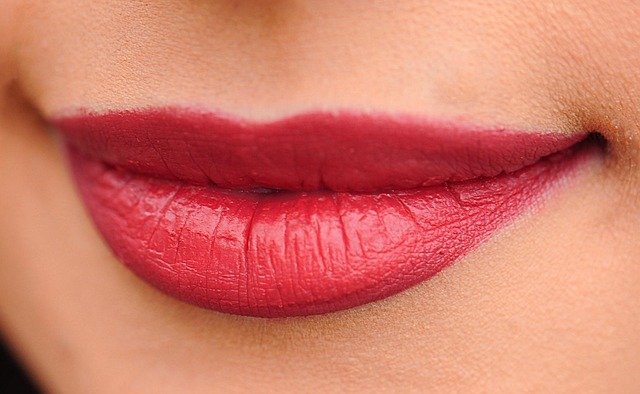The Timeless Allure of Red Lipstick
Red lipstick has captivated the beauty world for centuries, transcending time and cultural boundaries. This iconic cosmetic staple has adorned the lips of countless individuals, from ancient Egyptian royalty to modern-day celebrities. Its enduring popularity stems from its ability to instantly transform one's appearance, boosting confidence and making a bold statement. Throughout history, red lipstick has been associated with power, femininity, and rebellion, often reflecting the societal norms and attitudes of different eras. Today, it remains a go-to choice for those seeking to make a lasting impression, whether on the red carpet or in everyday life.

During the Middle Ages, red lipstick fell out of favor in Europe due to religious associations with sin and immorality. However, it experienced a renaissance during the Elizabethan era, with Queen Elizabeth I herself known for her signature pale face and crimson lips. The 20th century marked a turning point for red lipstick, as it became a symbol of female empowerment and rebellion against societal norms.
The Chemistry Behind the Color
The vibrant red hue of modern lipsticks is achieved through a careful balance of pigments, waxes, and oils. Common red pigments include carmine, derived from cochineal insects, and synthetic alternatives like D&C Red No. 6 and D&C Red No. 7. These pigments are combined with a base of waxes, such as beeswax or candelilla wax, and emollients like lanolin or vegetable oils.
The formulation of red lipstick has evolved significantly over time, with modern versions offering improved longevity, comfort, and safety. Innovations in cosmetic chemistry have led to the development of transfer-resistant formulas, moisturizing ingredients, and even color-changing technologies that adapt to individual pH levels.
Cultural Significance and Symbolism
Red lipstick has played a significant role in various cultural contexts throughout history. In ancient China, it was believed that red lips could ward off evil spirits. During World War II, red lipstick became a symbol of patriotism and resilience in the United States, with women encouraged to wear it as a morale booster.
In the 1950s, red lipstick epitomized glamour and femininity, popularized by Hollywood icons like Marilyn Monroe and Elizabeth Taylor. The feminist movement of the 1960s and 1970s saw a decline in red lipstick’s popularity, as it was associated with traditional beauty standards. However, the 1980s brought a resurgence, with red lips becoming a power statement in the corporate world.
Today, red lipstick continues to hold diverse meanings across cultures. In some Asian countries, it is associated with good luck and prosperity, while in Western fashion, it remains a timeless symbol of confidence and sophistication.
The Psychology of Red Lips
The psychological impact of red lipstick is well-documented. Studies have shown that wearing red lipstick can increase perceived attractiveness and boost self-confidence. This effect is partially attributed to the color red itself, which is associated with passion, energy, and assertiveness in many cultures.
Interestingly, research has also revealed that women wearing red lipstick are perceived as more competent and are likely to receive higher tips in service industries. This phenomenon, known as the “red-lip effect,” demonstrates the subtle yet powerful influence of this cosmetic choice on social interactions and perceptions.
Red Lipstick in the Digital Age
The advent of social media and digital technology has transformed the way we interact with beauty trends, including red lipstick. Instagram and TikTok have become platforms for showcasing diverse interpretations of the classic red lip, from bold matte finishes to glossy ombré effects.
Virtual try-on technologies now allow consumers to experiment with different shades of red lipstick without physically applying the product. This innovation has made it easier for individuals to find their perfect red, taking into account factors like skin tone and undertones.
The digital age has also brought increased awareness of sustainable and ethical beauty practices. Many consumers now seek red lipsticks made with natural, cruelty-free ingredients, leading to the development of eco-friendly formulations that maintain the iconic color without compromising on quality or ethics.
Finding Your Perfect Red
Despite its universal appeal, finding the ideal red lipstick can be a personal journey. Factors such as skin tone, undertones, and personal style all play a role in determining the most flattering shade. Generally, cooler skin tones are complemented by blue-based reds, while warmer skin tones pair well with orange-based reds. However, these guidelines are not rigid, and experimentation is often key to discovering one’s signature red.
The finish of the lipstick also contributes to its overall effect. Matte formulas offer a bold, long-lasting look, while creamy or glossy finishes provide a more hydrating and youthful appearance. The choice of finish can dramatically alter the impact of the red lip, allowing for versatility in different settings and occasions.
In conclusion, red lipstick’s enduring popularity is a testament to its power as both a cosmetic and cultural icon. From its ancient origins to its modern incarnations, this timeless beauty staple continues to captivate and empower individuals across the globe. As beauty trends evolve, red lipstick remains a constant, adapting to new technologies and cultural shifts while maintaining its status as a symbol of confidence, allure, and self-expression.




